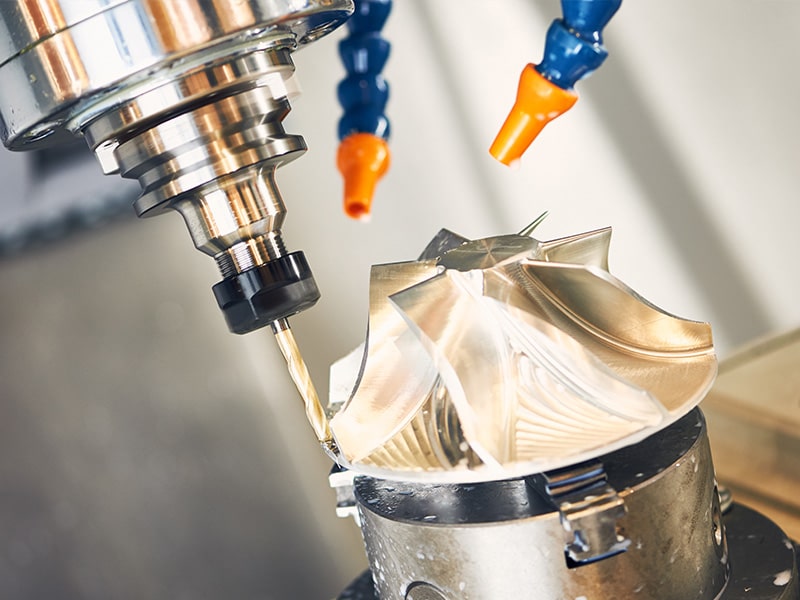CNC Machining: Revolutionizing Manufacturing with Precision and Effectivity
CNC Machining: Revolutionizing Manufacturing with Precision and Effectivity
Blog Article
CNC machining, short for Computer Numerical Control machining, has changed the face of manufacturing with its ability to bring precision effectiveness, efficiency, as well as automation to the manufacturing process. It makes use of computers to cut, shape, and fabricate complex parts and parts made of materials such as metal and plastic, wood as well as composites. Automating several of the processes that once required the intervention of a human, CNC machining has significantly improved the accuracy and speed of manufacturing, making it indispensable in industries like aerospace, automotive medical, electronic and other. The integration of computers with CNC machining equipment has created new possibilities in the production of highly precise and complex parts, increasing the efficiency and quality of production.
In the core of CNC machining is the ability to convert digital design concepts into physical parts. With the help of computer-aided designing (CAD) software developers and engineers can design elaborate 3D models for the desired component. This digital design is then transferred into precise instructions called "G-code," which the CNC machine uses to execute operations like cutting, drilling, or milling. Digital control provides a high level of precision that manual milling cannot reach. Also, after a design is programmed into the machine, it will repeat without any issues, and produce identical components in huge quantities with no manual adjustments. This repeatability is essential in all industries where precision as well as consistent production are important.
Apart from its high-precision, CNC machining is also acknowledged for its speed and value. Traditional machining methods often require skilled workers to manually regulate and adjust the machinery, which can be time-consuming and costly. CNC machining can eliminate much of the manual effort involved in the production process because machines run in complete autonomy for extended time after having been established. It allows companies to boost production without needing to hire additional staff or equipment. In addition, CNC machines are capable of performing several operations in a single setup which means that there is less need to move parts or reposition the part that saves time as well as decreases the possibility of mistakes. This automation leads to faster manufacturing cycles as well as lower cost per part, making CNC machines a desirable alternative for companies who want to simplify their manufacturing processes.
One of the major aspects of CNC machining is using computer-aided designs as well as computer-aided production software. CAD software allows engineers to design precise 3D designs of the components to be produced, while CAM software translates these designs into machine-specific instructions. This seamless connection between production and design makes sure that the finished product is in line with the design requirements originally set out. Additionally, the CAD/CAM software allows rapid prototyping. It allows companies to easily test and tweak their ideas before they commit to mass production. The ability to easily modify the designs and make prototypes offers firms an edge fields where innovation and speed to market are crucial. To receive supplementary information please check out Premiumparts
One of the problems with CNC machining is the cost for initial setup. Making investments in CNC machinery as well as the software required to operate it could be costly, particularly for small-sized businesses. However, the longer-term advantages of CNC processing, including lower labor costs, increased production efficiency, and improved products' quality usually outweigh the initial cost. Additionally, many companies provide CNC machines to firms which may not be able to make the investment in their machines, which allows smaller companies to benefit from the equipment without incurring the initial costs. As the demand for CNC manufacturing continues to grow, the cost of machinery and software is predicted to fall, making it accessible to a wider range of businesses.
As a conclusion CNC is now an essential technology in modern manufacturing thanks to its high-precision effectiveness, speed, and adaptability. It has revolutionized the method by which parts are produced, allowing for the creation of complex models with high levels of accuracy, while cutting cost and time to produce. Although it is a significant initial investment, the long-term advantages of CNC Machining make it an useful tool for companies across diverse industries. As technology evolves, CNC machining is likely to play an even more crucial role in shaping the future of manufacturing, promoting innovations and helping businesses adapt to the requirements of an ever-changing world market.